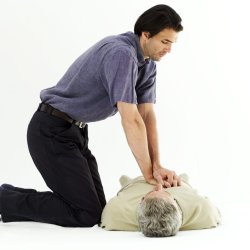Understanding Cardiopulmonary Resuscitation (CPR)
Cardiopulmonary Resuscitation is an emergency procedure administered that 
CPR is a manual process and can be administered by any individual with prior training or experience. It is done by compressing the chest shallowly on the left side where the heart is located in quick continuous repetitions. This is intended to create artificial blood flow. In many cases, CPR is accompanied by artificial ventilation aimed at providing oxygen to the victims, who in many cases are unconscious. This is done by exhaling into the mouth or nose of the
victim.
In cases of both CPR and artificial ventilation, the recommended ratio is 30:2 for adults and 15:2 for children. The recommended compression rate for both adults and children is at 100 times per minutes. In certain cases compression only CPR is performed. This is one without artificial ventilation.
CPR Courses – How effective is CPR
While it is only used as an intervention in cases of emergencies, CPR alone is not enough to save a life unless the victim regains normal circulation and consciousness following CPR. Medical interventions such as defibrillation are the most effective way to restore a pulse in an individual. Other advanced medical machines can also be used to support the victim once in a hospital.
CPR is therefore, useful in ensuring that the victim is in a revivable condition when the person reaches hospital and should therefore be performed immediately a person suffers cardiac arrest. It is recommended that CPR is commenced within six minutes after blood stops flowing. This is because vital organs such as the brain may suffer irreversible damage if deprived of blood for much longer. The survival rate for people who receive CPR is estimated at less than ten percent.
CPR Courses – Risks associated with CPR
While CPR intervention is intended to save life, there are various injuries and risks that arise from it that may require treatment. Since it is a physical process that involves compressing the chest, injuries on the chest and underlying organs are not uncommon. Most common of these are fractures of the ribs and sternum as well internal chest bleeding due to lung bruising or other internal organs. The extent and seriousness of these injuries depend on the age and gender of an individual as well as how the CPR was performed. The rate of picking a serious or life threatening injury from a CPR procedure is however low, and most are treatable. It is among the skills trained in any emergency aid or first aid course. It is a vital skill to possess and can be the difference between life and death if or not administered to a cardiac arrest victim.
Meta
CPR is a manual process and can be administered by any individual with prior training or experience.
